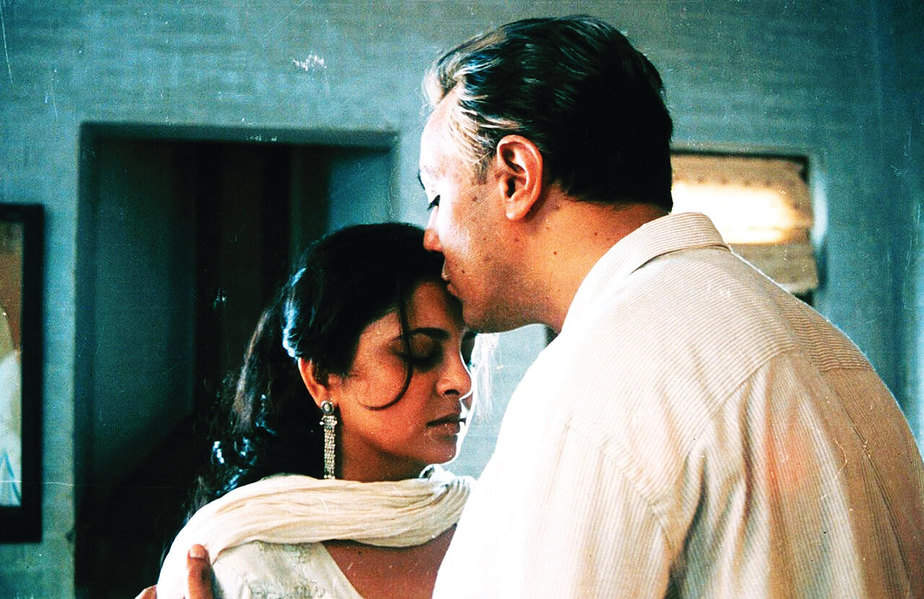
As the recent spate of sex crimes against children hit the headlines and stirred national discourse, it would be relevant to see how Hindi films have engaged with the theme. In their role of being reflection of the popular culture in the country and being one of the many arbiters of public perceptions, Hindi films can’t leave such depraved side of society untold in their cinematic narratives.
The sheer scale of the scourge is too stark to go unregistered on the screen. According to the data released by the National Crime Records Bureau (NCRB), 2016 (the latest year for which such data is available) saw 19,765 cases of child rape registered in India — that’s an insidious rise of 82 per cent from 2015, a year in which 10,854 such cases were registered (no less alarming a figure).This can also be numerically seen with what the UN Committee on Rights of the Child observed in 2014: one in every three rape victims in India is a child.
Almost from a decade ago, a government study, conducted by the ministry of women and child welfare, found that 53.22 per cent of children participating in its survey reported some of sexual abuse.
Though such ugliness in society hasn’t reared its head in last two decades only, it’s in this period that Bollywood has somehow engaged with the theme. For that matter, till the advent of this century, chronicling child sex abuse in India hadn’t figured in as the key theme in world of letters too- scholarly, journalistic or even literary accounts. At the onset of this century, journalist and writer Pinki Virani’s work Bitter Chocolate (Penguin, 2000) painstakingly documented and narrated various cases of child sexual abuse across India.
A year later, it was in Mira Nair’s Monsoon Wedding (2001) that the issue surfaced in a Delhi upper middle class setting. The sexual abuse was by no measure the leitmotif of the film but a side-note as the plot unfolded towards its end.
The film digs into the predatory past of a family elder. A mother tries to protect her child from the advances of the elder (played by Rajat Kapoor) as she (enacted by Shefali Shah) herself was subjected to sexual abuse by him when she was a child. The response of the family to this tumbling of skeletons from the family cupboard is also interesting. In its portrayal of forward looking ending, the film glosses over the denial mode, reticence and even hush-up that accompanies such unsavoury revelations in the family.
Madhur Bhandarkar’s Page 3 (2005) had a subtext of organised child sex exploitation. The film visits the dark alleys of child trafficking and organised paedophilia network catering to the pervert sections of the city elite. In choosing its midway between art house and mainstream cinema, it exposes the sordid lives cloaked under the glitter of status, money and social clout.
That, however, doesn’t restrict the class and gender configuration of portraying child sex abuse on Hindi screen. In Imtiaz Ali’s Highway (2014) both the lead characters , a captive girl (played by Alia Bhatt) and her abductor (played by Randeep Hooda) strike a chord in strange circumstances. One of the contributors to their unusual equation is despite coming from different socio-economic groups and gender, both have traumatic memories of being sexually exploited in their childhood. The film ends with the girl finally exposing her abuser as the stunned family fights hard to look the other way.
The theme of sexual abuse of male child could also be seen in I am Abhimanyu part of the anthology of short films I am ( 2010).The film shows a young man (played by Sanjay Suri) trying to painfully extricate himself from memories of being sexually abused by his step-father. The film is loosely based on the experiences of fashion designer Ganesh Nallari and besides other parallel themes, it seeks to portray the seminal imprints of sex abuse on a child’s pyche.
Ali Abbas Zafar’s Gunday (2014) also fleetingly deals with the sexual abuse of a child ( also a refugee of post-1971 Indo-Pak war) by a police officer. Though peripheral to the plot of the film, the episode marks the brazen impunity with which people with authority can get away with such crimes while leaving scars on one’s childhood.
More recent portrayal of girl child sex abuse issue could be seen in Sujoy Ghosh’s Kahani 2 ( 2016, a sequel to 2012 thriller). Within a mainstream frame of filmmaking, the film tries to unravel different layers of abuse — ranging from the communication riddle stifling articulation of such crimes to personal and family responses to it. Besides these, the issue of child trafficking for sexual exploitation have also flettingly engaged scriptwriters — Mardani (2014) being one of them.
As India confronts the darker “selves” that are regularly revealing their predatory sides in the society we live in, the tales of depravity have found their ways to Hindi screen. What, however, needs a more sustained narrative is the interplay of such predatory criminality with social patterns of exploitation at home and in external settings of unknown terror. The psyche of a traumatised child needs a more honest and holistically sensitive portrayal while the sexual predators need to be dissected and exposed more clinically.
Dense fog disrupted operations at Delhi airport on Friday, leading to 79 flight cancellations and…
After past differences, Karan Johar and Kartik Aaryan finally collaborate on Tu Meri Main Tera…
Delhi Fire Service has initiated comprehensive fire safety inspection drive in restaurants, hotels and clubs…
Out of 40 air quality monitoring stations across the city, 14 recorded severe air quality…
Govt, however, acknowledged that air pollution is one of the triggering factors for respiratory ailments…
Rising air pollution levels in the capital, the Delhi government on Thursday undertook a comprehensive…